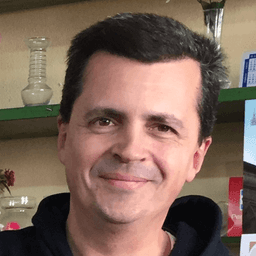Ensuring Quality: AccelOne’s QA Engineering for a Cable TV Network App
AccelOne provided comprehensive QA services for a cable TV network’s mobile app, ensuring smooth functionality and an enhanced user experience.
Written by Luis Paradela|Posted on July 15, 2020

Business Requirement:
Our client is a Chicago-based financial technology company that specializes in high-frequency trading. Their digital asset exchange platform is designed to serve banks and brokers, enabling the trade of fiat (standard) currency and cryptocurrency between banks.
The client needed quality assurance services to test their Android mobile app’s video and gaming interface, ensuring that the unique split-screen functionality worked seamlessly before deployment.
Business Solution:
AccelOne developed a comprehensive QA testing plan that included functional testing of the app’s video player and game components, issue tracking, and bug resolution.
Challenges:
The project encountered a critical issue with the proprietary video player component, which required detailed diagnostics and rapid bug fixes.
This was a unique challenge for two reasons:
-
Without being able to refer to a precedent or guide for how a platform that enables the exchange of fiat currency and cryptocurrency should be tested, our team needed to design the QA process from the ground up.
-
Trading between fiat currency and cryptocurrency can sometimes be a complex process, and our client’s platform is designed to make interbanking easier. The key to ensuring a truly seamless trade is thorough QA engineering that predicts and addresses all critical points in the trade. Our team was tasked with making smooth asset exchange possible between the fiat and cryptocurrency systems.
Approach:
AccelOne’s QA team shifted focus to the gaming interface while the video player was being fixed, ensuring that the app could still progress through testing without delays.
This QA engineering project was taken on by AccelOne’s senior nearshore QA engineer and her team. They worked closely with our senior back end developer, senior front end developer, and UI designer to develop the appropriate processes and propose fixes.
Our technical project manager coordinated team efforts to maintain timely project delivery.
Technical Solution:
The QA team used tools like RedMine for bug tracking, JIRA for test case management, and Skype for communication with developers. The app was tested across multiple Android devices from AccelOne’s device library.
THE QA ENGINEERING SOLUTION
AccelOne engineered and implemented a complex, semi-automated testing procedure to ensure an exhaustive review of the client’s trading software platform. Our software development company executed the plan in three phases:
1. Preparation: The team collaborated with the client to establish a complete understanding of the trading platform and existing documentation. They then identified the critical points that would be investigated in the testing phase.
2. Case creation: The QA engineer wrote a complete test suite that included 64 unique test cases across five user types, corresponding to five banking and trading staff roles with different application permissions. These cases, which included both happy paths and error cases, were validated with the client and internal team, and reviewed to ensure that no scenario had been left out.
Tools: Cucumber Studio was chosen to document test cases. As a user-friendly, free application for small teams, it was a cost-effective option that didn’t require extensive training or the creation of many user accounts. The ability to export cases and execution results allowed for easy sharing with the client and broader internal team.
3. Automation & testing: Test cases for the most critical functionalities of the platform were automated to perform the tests faster. Automation also made it possible to generate a transaction dataset to be used for further testing. The majority of critical case tests were automated, while other tests were performed manually. The QA engineer then worked with the front end and back end developers to define the causes of errors and propose solutions.
Tools: Selenium WebDriver was chosen as the black box testing application for front end automated testing. Simulating a real user, the application makes it possible to run the same test on multiple browsers and operating systems.
*Python was used for back end testing to directly interact with the back end API and validate application flows without going through the interface. We chose it as a user-friendly, high-level, object-oriented scripting language, and we also used it as a binding language for Selenium.
The Page Object Model design pattern was used for testing architecture. This strategy facilitated test maintenance and prevented code duplication.
Results
The app was successfully deployed without critical issues, and the project stayed on schedule thanks to AccelOne’s collaborative QA approach.
Semi-automated case testing was an important element of the solution. It allowed AccelOne nearshore team to:
- Conduct tests quickly and generate QA reports
- Automatically generate test transaction datasets to be used for further testing
- Deliver the complete QA project within just two months
- Provide full documentation of the testing process and its results to the client, making it possible for the product owner to re-run tests independently following future updates to the application
By engineering an industry-specific process, programming automated tests, selecting the optimal tools, and ensuring careful project management, AccelOne was able to implement this solution in a highly cost-effective and timely manner that exceeded client expectations.

Luis Paradela
Chief Development Officer
Co-Founder
Buenos Aires
View profile